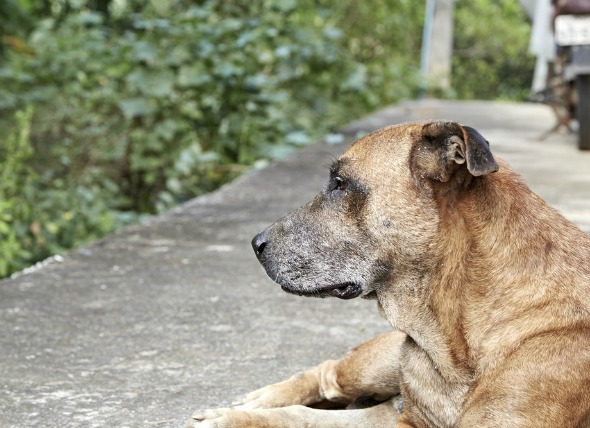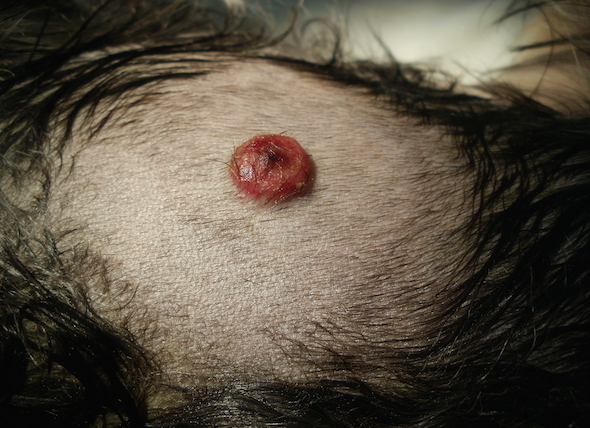

Insulinomas are malignant neoplasms -- fast growing cancer cells -- of the beta cells in the pancreas. The beta cells primarily secrete insulin, among other hormones. Insulin produces a variety of effects in the body -- the primary one being to regulate glucose levels throughout the body's cells. Because insulinomas secrete excessive insulin, the blood stream becomes low in glucose (a condition referred to as hypoglycemia), which causes weakness or neurological problems.
The most common symptom of an insulinoma is physical collapse, or loss of consciousness (syncope). Seizures, extreme weakness, and other neurological abnormalities are also common. Because the insulin is released periodically, symptoms are not consistent and frequency is not necessarily predictable.
If your dog should collapse and a blood sample indicates low glucose, insulinoma will be highly suspected and your veterinarian will need to follow through with further tests to confirm it. However, multiple blood samples may need to be taken over a period of time to determine if there is a persistent low glucose concentration. Your doctor will need to determine the insulin concentration at the lowest glucose concentration. Withold food from your dog before tests are performed is essential for determining true glucose levels - your veterinarian will advise you on the appropriate way to conduct these short term fasts for your dog.
An amended insulin:glucose ratio (AIGR) may be useful when your dog's insulin level is low, yet still in the normal range. Insulinoma is still suspected in these type of cases. If the insulin level is inappropriately high for the decreased glucose level, insulinoma may still be present.
Ultrasound, computed tomography (CT), or magnetic resonance imaging (MRI) can be helpful in determining the extent of the pancreatic tumor and how much it is metastasizing. Typically insulinomas do not metastasize to the lungs; however, chest x-rays may indicate other neoplasias as a cause of persistently decreased glucose. Scintigraphy, a form of imaging using radioactive isotopes to identify abnormal tissue, can also be used to identify the location of primary insulinomas and metastasis.
If your dog has collapsed or is suffering from seizures because of an insulinoma, medical emergency treatment usually will consist of immediate administration of glucose. For home treatment of sudden collapses or seizures, corn syrup can be given as a temporary solution to increase glucose levels. But medical attention will still be needed, so consulting with a veterinarian is critical. The veterinarian may also give your dog glucose containing fluids and/or steroids to counteract the insulin effects.
If your dog's health status, along with imaging of the tumor, indicates potential value from surgery, removal of the tumor will usually be recommended. Hypoglycemia may be resolved by removing the part of the pancreas with the tumor on it. However, if there is significant metastases or functional tumor cells in the remainder of the pancreas, additional treatment will still be necessary. Likewise, if the tumors are generalized, or if there are other health concerns, medical management may be advised as the primary mode of treatment.
Prednisolone is a steroid that stimulates formation of glucose and is often a cornerstone of medical treatment. Other medications that might be used to treat insulinoma include:
Dietary management is frequently used in conjunction with other treatments. In fact, you may be able to minimize the amount of medication, or the need for additional treatments, by feeding your dog small, frequent amounts of moderate protein, low sugar foods, and complex carbohydrate rich foods. Clinically, the most important dietary technique is the frequency of the meals. Essentially, this technique is used to limit the fluctuations in insulin that instigate the hypoglycemic episodes. Controlling symptoms of hypoglycemia is ultimately the goal. Your veterinarian will assist you in developing a workable diet plan for your dog.
Surgery, along with dietary precautions, can dramatically lessen hypoglycemia and insulinoma symptoms for your dog. However, in many cases continued medical treatment and dietary management will be necessary. Frequent check-ups will be necessary to monitor this condition, and to determine if progress is being made in a positive direction. The success of the treatments will be evaluated and the type of treatment fine-tuned based on your dogs symptoms and whether any of the conditions have recurred.
 Anemia Due to Chronic Kidney Disease in Dogs
Erythropoietin (EPO) is a glycoprotein hormone, p
Anemia Due to Chronic Kidney Disease in Dogs
Erythropoietin (EPO) is a glycoprotein hormone, p
 Inflammation of the Soft Tissues in the Mouth in Dogs
Stomatitis in Dogs
Stomatitis is the condition wh
Inflammation of the Soft Tissues in the Mouth in Dogs
Stomatitis in Dogs
Stomatitis is the condition wh
 Fatty Skin Tumors in Dogs
Lipoma in Dogs
Lipomas are subcutaneous (undernea
Fatty Skin Tumors in Dogs
Lipoma in Dogs
Lipomas are subcutaneous (undernea
 Fungal Infection (Coccidioidomycosis) in Dogs
Coccidioidomycosis in Dogs
Mycosis is the medical
Fungal Infection (Coccidioidomycosis) in Dogs
Coccidioidomycosis in Dogs
Mycosis is the medical
 Acne in Dogs
Pustules in Dogs
Much like in teenage humans, acn
Acne in Dogs
Pustules in Dogs
Much like in teenage humans, acn
Copyright © 2005-2016 Pet Information All Rights Reserved
Contact us: www162date@outlook.com